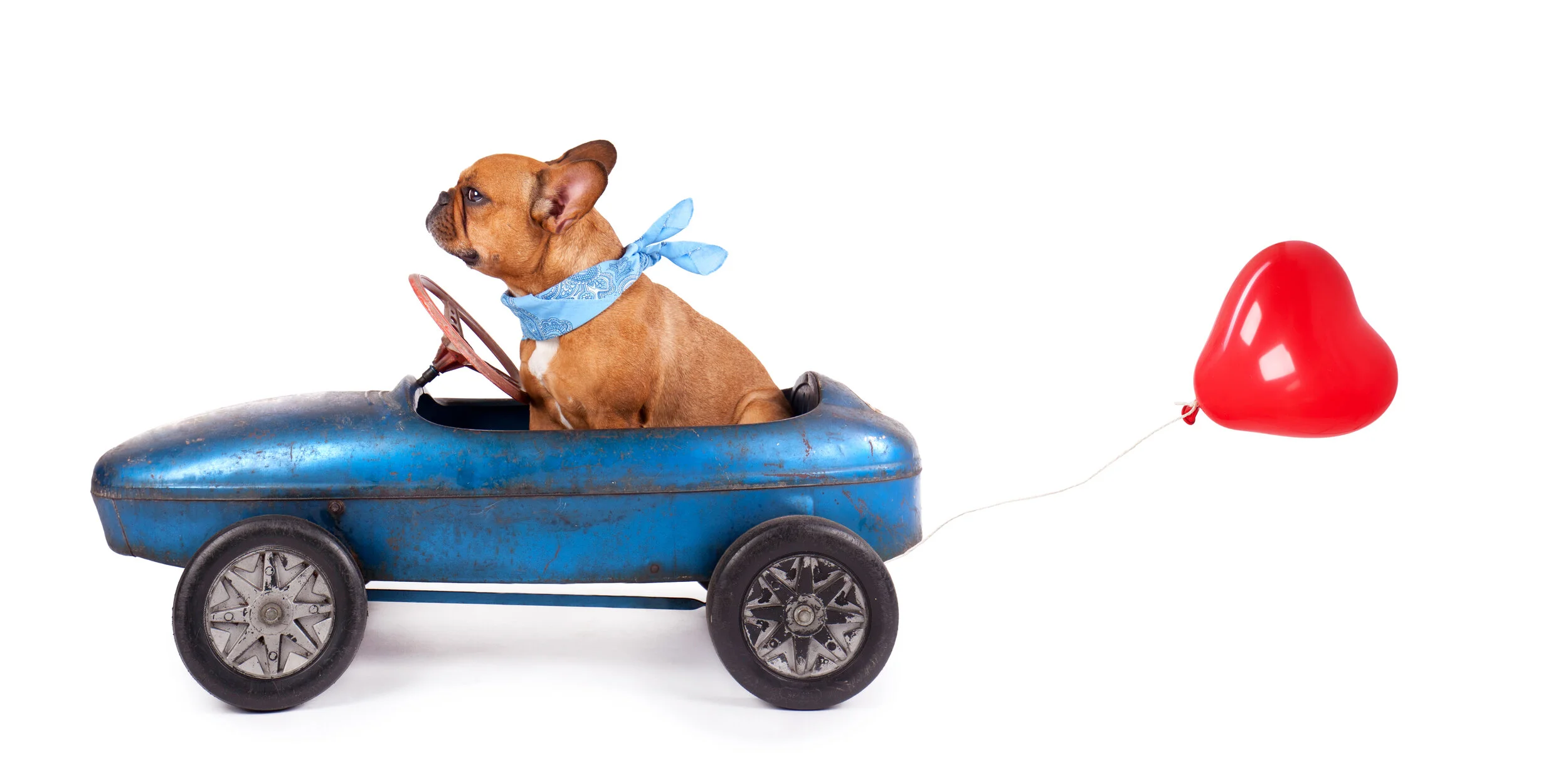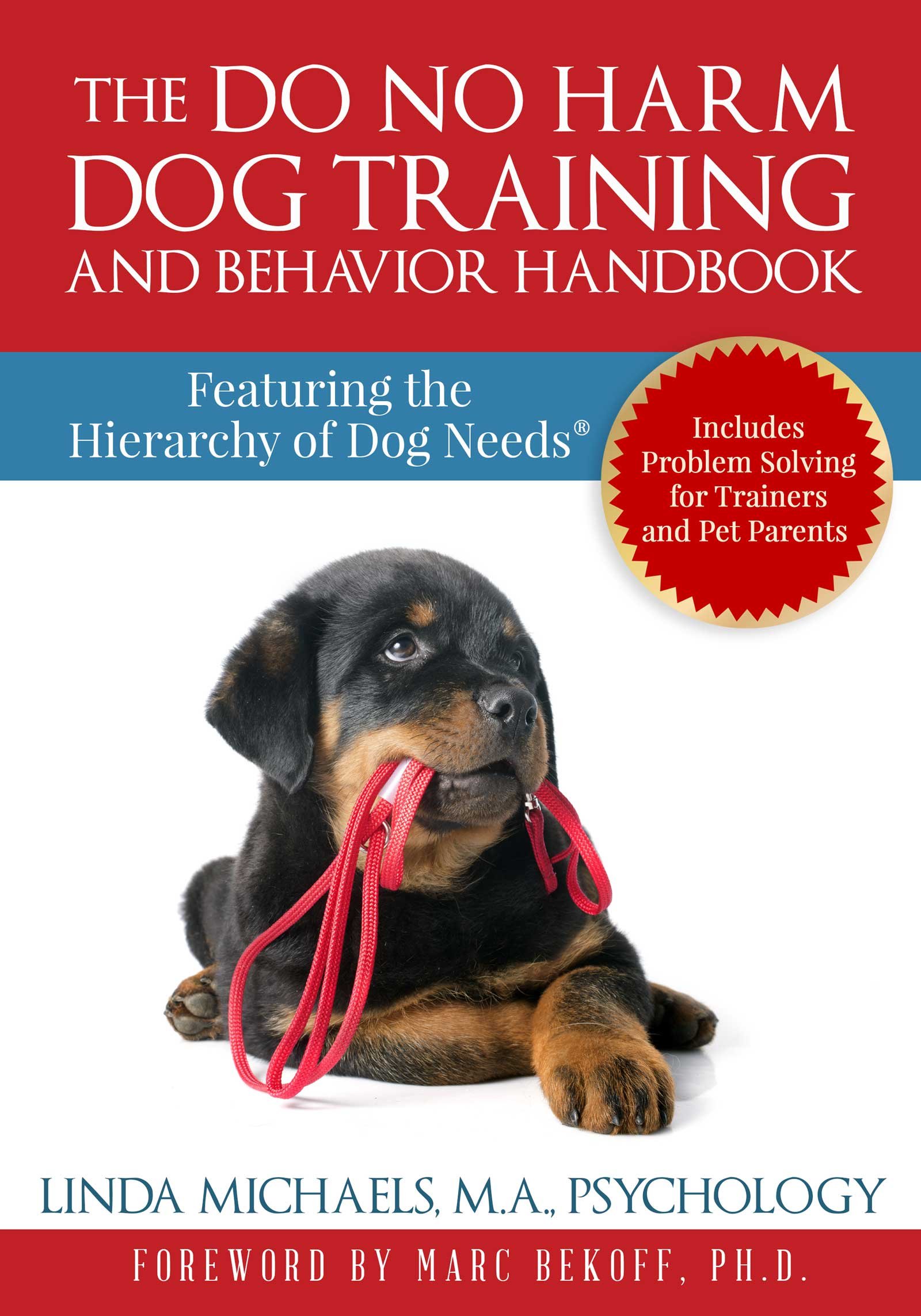Let's Go for a Ride! Linda Michaels, M.A., Psychology
Help your dog learn the joy of going for a ride!
Look at it from your dog’s point of view!
By Linda Michaels, first published in Ranch Coast News
If you want to be sure that Fifi or Bowser happily hops into the car, this article was written for you. You’re all set to take your dog out on an exciting adventure or to spend some quality time together running errands, but when you say, “Let’s Go for a Ride” your pup turns tail, slinks away and goes into hiding. Once inside the car, your puppy howls, shakes uncontrollably, cries, or tries to escape, then crawls into your arms holding on tenaciously with his nails while you're trying to drive—making you feel just terrible too. He’s scared and nothing you do seems to help.
“Bella”, a rescue, was not about to get into the SUV—no way! Taking a ride in the SUV required her to hoist herself up about a foot and one-half then enter a narrow closed-in space, commonly referred to as the back seat. How could she be motivated to overcome her deep-seated fear and get into the car? As her trainer, I began by teaching her to walk up a wide, low-sloped ramp with much clicking and treating to propel her along a trail of yummy treats. Then I put the ramp on the SUV’s running board. Next, with both back doors to the SUV open and “Bella’s” pet mom on one side and me at the other, we enthusiastically and painstakingly lured her onto the back seat. I clearly remember the instant when she decided to hop off the ramp and into the car to get to her pet mom who had the sausage!
We then began to desensitize her to the noises and movement of the car, one baby-step at a time. Once on the road, we took a slow ride directly to the nearest fast-food drive-through to buy a double bacon cheeseburger she devoured in the back seat! This is an excellent illustration of a behavior modification plan that associates a positive experience with riding in the car, that is, we pair a positive thing with a feared thing in order to overcome a fear.
“Frankie”, a purebred puppy of 4 months who had been allowed to ride on the pet parent’s lap was one of my challenging recent cases. He was quickly growing into a good size dog, so for many reasons, this method was not going to work for long. Socialization training was of paramount importance at this stage of his development and riding in the car from day one was imperative. It took dear “Frankie” 3 weeks of daily trips before he finally began, out of curiosity to sniff, albeit gingerly, out the window. Window sniffing can be a game-changer by turning a ride in the car into a wonderfully exciting experience for your dog. A hopeful adoptee from a humane society was afraid of….everything. Poor “Arty”– he weighed eighty pounds and it required two people to hoist him into the car for an overnight behavioral evaluation at my home.
So, let’s try to look at it from your dog’s point of view. Cars are ginormous, noisy, rattling devices replete with engines that roar, doors that slam, perhaps loud music and mysterious wipers that crawl across the windshield as well as having all manner of odd and novel features your puppy or dog may never have acclimated/habituated to in daily life at home. Plus, a whole universe full of people, dogs and other cars races by at a speed simply unimaginable to your dog. As if that’s not enough for a scardy-dog, safety-conscious pet parents may want their dog to wear a harness or to be crated to protect both of you in case you need to slam on the brakes or you get hit by another vehicle—the down-side for your dog is confinement. If confined your dog cannot run away if frightened. Running away from something frightening is adaptive and survival-wise in the wild…and even for us humans.
Desensitize your pup to each of the above triggers— then address the movement of the car itself that may be causing the puppy-tummy to turn upside-down.
Riding in the car or engaging in any feared activity can, become a great joy or at the very least, a less stressful part of life for you both. The two main principles of a fear-desensitization plan can be used to decrease any fear your dog may have:
1. Present the feared activity at an intensity that your dog can comfortably tolerate, then
2. Increase the intensity of the activity by baby-steps—as long as your dog continues to remain calm.
If your dog's behavior, body language or vocalization are stressed, you need to go back to where your dog can comfortably tolerate the intensity of the stimuli. It may take some time to complete these steps depending on your dog’s history and willingness to play the training game.
Here are some steps to help you and your dog get on the road:
1. Lure your dog into the car with food or a favorite toy. This technique may work best when your dog is a bit hungry, so train before breakfast and before dinner if possible. You want your dog to “walk through” her fear of the car and to have the food win out. Things go more smoothly for everyone when it is her decision to get into the car.
2. Close the door while you are inside of the car with a big smile on your face. Provide some happy words of encouragement as you give your dog a treat at the same time. Open and close the door a number of times reinforcing your dog enthusiastically each time.
3. Start the engine but don’t go anywhere. Just sit talking happily to your pup in the car for a while. At this juncture, you may want to add some doggie massage to comfort your pup. Desensitize your dog to all of the noises and gadgets in the car, slowly, one at a time.
4. Drive very slowly at first on quiet streets before picking up speed
5. Block some of the windows with a screen or put a cover over the crate if your dog appears stressed in order to shelter her from the onslaught of novel stimuli. It will calm her, just as it does a bird!
6. Make the ride itself reinforcing. Open the window a bit to let the smell of the great outdoors capture your dog’s interest. A nice, slow ride in the country with trees and natural landscapes can help to make first-time adventures reinforcing for your pup so that you can more easily move on to more intense environments. Keep a favorite chew item or plush toy in your car that your dog is just loves, and save it just for rides.
7. Head out on the Highway as your dog gives you the “I’m OK Now…Let’s Go for a Ride”.
The payoff for your patience and efforts will be a lifetime of happy joyriding with your beloved pup who is now more than happy to be your traveling companion. A great bonus is that now you can use “Let’s Go for a Ride” as a reward!
In the event of an evacuation emergency, have your dog’s disaster preparedness pack ready to go— you may need to make a hasty departure. If you won't be staying with relatives or friends, call your favorite dog-friendly hotel well in advance to secure a reservation for comfy accommodations for you and your precious pup. To confine your dog inside the car with you, a padded crate with tie downs or a car harness is best but a laundry basket or a box for a small pup will do in a pinch. Bring bedding, wet and dry food, plenty of bottled water, medications, first aid kit, supplements, leash, harness, collar, ID and rabies tags, poop bags, plus chew and other toys to keep your pup busy while you make a great escape with Fifi and Bowser safely in tow. Be sure to provide your pup with frequent potty breaks, stretch breaks, water breaks and as we all know, never leave your dog alone in the car on a warm… or cold day.
Although the desensitization techniques described in this article apply to overcoming the fear of riding in a car, the same principles may be applied to any fear, hyperactivity, and even to other-dog aggression behaviors that may be troubling your dog. Try it. You and your dog will like it!
Originally published Ranch Coast News, Lorine Wright, Executive Editor. All rights reserved.
Learn More. Find Linda’s Amazon Best Selling book, The Do No Harm Dog Training and Behavior Handbook here ~
Learn more about separation anxiety and its treatment in The Do No Harm Dog Training and Behavior Handbook.


